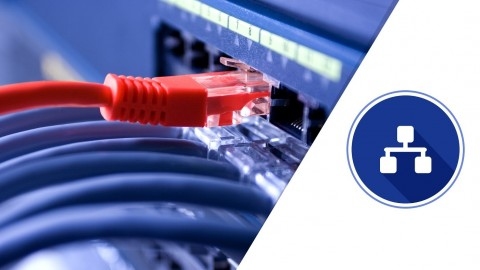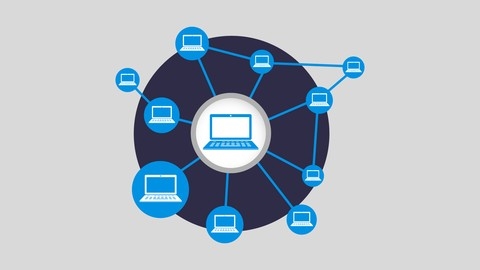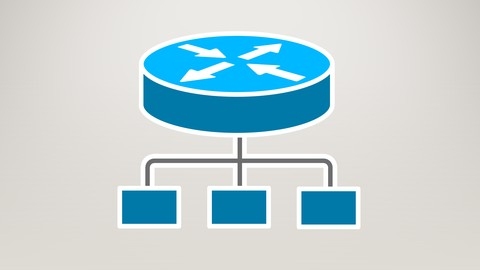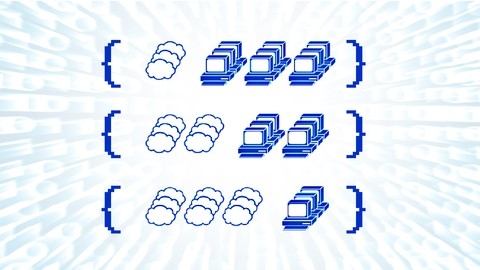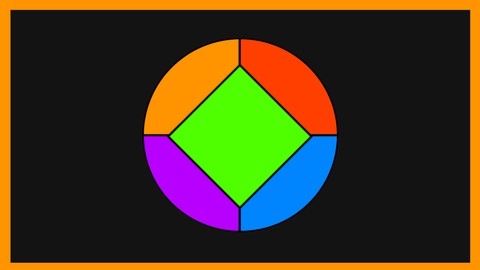Subnetting is a critical networking skill that allows you to efficiently divide a network into smaller subnetworks, improving network performance, security, and manageability.
Understanding subnetting is essential for network administrators, IT professionals, and anyone working with computer networks.
By learning subnetting, you can optimize IP address allocation, enhance network security by segmenting traffic, and gain a deeper understanding of how networks function.
Finding the right subnetting course on Udemy can be a challenge, with so many options available.
You want a course that’s comprehensive, engaging, and taught by experienced professionals, but also fits your learning style and goals.
For the best subnetting course overall on Udemy, we recommend IP Addressing and Subnetting.
This course provides a comprehensive introduction to IP addressing and subnetting, covering essential concepts like subnet masks, broadcast IDs, and the differences between private and public IP addresses.
It also delves into advanced subnetting techniques like FLSM (Fixed Length Subnet Masking) and VLSM (Variable Length Subnet Masking), equipping you with the skills to confidently subnet networks of different classes and requirements.
While IP Addressing and Subnetting is our top pick, we’ve also reviewed numerous other high-quality subnetting courses.
Keep reading to discover more options for different learning styles and goals, including courses tailored for beginners, advanced learners, and those preparing for specific certifications.
IP Addressing and Subnetting
You will learn about TCP/IP addressing, including IPv4 address classification and how to identify the network and host portions.
The course covers essential concepts like subnet masks, broadcast IDs, and the differences between private and public IP addresses.
A major focus is on subnetting techniques like FLSM (Fixed Length Subnet Masking) and VLSM (Variable Length Subnet Masking).
For FLSM, you’ll learn how to subnet class C networks for scenarios like needing 50 or 30 hosts.
The course also dives into FLSM for class B and class A networks.
VLSM is another key topic, covering how to use this more efficient subnetting method for class C networks, including a shortcut technique.
You’ll also learn VLSM for class B networks.
The concept of slash value notation is introduced to represent subnet masks more concisely.
Throughout the course, you’ll encounter plenty of subnetting practice questions to reinforce your understanding.
These questions cover various scenarios and difficulty levels, ensuring you gain a solid grasp of the material.
With its clear structure and practical exercises, this course equips you with the skills to confidently subnet networks of different classes and requirements.
IP Addressing and Subnetting - Zero to Hero
This course starts with the fundamentals of IP addressing, covering different types of addresses, binary numbers, and the format of IPv4 addresses.
You’ll learn about the different classes of IPv4 addresses and how CIDR (Classless Inter-Domain Routing) works.
The course then dives into the core topic of subnetting, explaining why it’s necessary and introducing you to Fixed-Length Subnet Masks (FLSM) and Variable-Length Subnet Masks (VLSM).
With plenty of practice examples, you’ll learn how to subnet Class A, B, and C networks using FLSM, as well as how to apply VLSM for more efficient IP address allocation.
You’ll also learn about summarization, a technique used to represent multiple networks as a single entry in routing tables, making routing more efficient.
The course includes an example to help you understand the concept practically.
Throughout the course, you’ll gain a solid understanding of key concepts like public, private, and reserved IP addresses, binary numbers, and CIDR notation.
The hands-on examples and step-by-step approach will ensure you develop a firm grasp of IP addressing and subnetting, essential skills for anyone working with computer networks.
Introduction to IP Addressing and Subnetting the Easy Way
You’ll start with the basics, learning the difference between IP and MAC addresses.
Then, you’ll dive into understanding IPv4 addresses and binary math, which is crucial for mastering subnetting.
The course doesn’t just skim over the topics – it provides in-depth explanations and examples for subnetting class C, B, and A networks.
You’ll even get practice worksheets to apply what you’ve learned.
And if you’re interested in variable length subnet masks (VLSM), the course has you covered there too.
But it’s not just about IPv4.
You’ll also learn about IPv6 – its addressing scheme, transmission types, and how it translates and maintains compatibility with IPv4.
The section on assigning IP addresses, both static and dynamic, is really useful too.
You’ll even get a live demo on setting up a DHCP server on Windows Server 2016.
The course is structured in a way that builds your knowledge step-by-step.
You’ll start with the fundamentals and then move on to more advanced topics like scenario-based subnetting.
And with the downloadable lecture PDFs and reference tables, you’ll have all the resources you need at your fingertips.
The instructor covers both theoretical concepts and practical applications, ensuring you’ll be well-prepared for real-world scenarios.
Subnetting Made Easy
The course starts by laying a solid foundation, walking you through the fundamentals of numbering systems and binary-to-decimal conversions.
The traditional subnetting method is covered next, complete with multiple examples to reinforce your learning.
However, the true gem lies in the “Subnetting Made Easy” section.
This innovative approach simplifies the process, making it more accessible and efficient.
You’ll work through five detailed examples, followed by handwritten walkthroughs to cement your understanding.
To ensure you’ve grasped the material, the course includes two quizzes specifically designed to test your mastery of the “Subnetting Made Easy” technique.
You’ll have the opportunity to apply what you’ve learned and identify areas that need further practice.
This course goes from IP address classes and CIDR notation to the intricacies of subnet masks.
Subnetting - Become a Subnet Master!
The course starts by covering the fundamentals of IPv4, including address types, classes, formats, and usable addresses.
You’ll also learn about subnet masks and the differences between public and private address classes.
After solidifying the basics, the course dives into subnetting.
You’ll begin with a subnetting example to understand the concept, and the course ensures you know your binary – a crucial skill for subnetting.
From there, you’ll learn how to calculate IPv4 subnets and design them based on network and host requirements.
The course provides multiple examples to practice designing subnets for different scenarios.
Reverse engineering subnets is also covered, teaching you how to analyze existing subnets.
Throughout the course, you’ll have opportunities for review, including a classroom-styled review section.
The course emphasizes using practical tools to apply your subnetting knowledge effectively.
You will learn subnetting concepts through examples and practice designing and reverse engineering subnets for various requirements.
The focus on binary and using practical tools ensures you gain hands-on experience with subnetting techniques.
IP Addressing and Subnetting - Hands-on Learning Approach
The course starts by introducing you to IP Version 4 Classful Networking, teaching you how to convert decimal to binary and the structure of an IP address.
You’ll learn about the different classes of IP addresses, how many computers are in each network, and how to assign IP addresses.
The course covers important concepts like private IP addresses, CIDR notation, and other types of IP addresses, including the loopback IP address.
With a solid foundation, you’ll dive into subnetting - understanding what it is and why it’s necessary.
You’ll learn how to calculate the subnet mask and identify the subnets on a subnetted Class C network.
The course provides a step-by-step approach to subnetting a Class C network, with examples for different subnet masks like /25, /26, /28, and /30.
You’ll even learn techniques for subnetting in your head, making the process more efficient.
The course doesn’t stop there - it also covers how to subnet Class A and Class B networks.
Transitioning to IPv6, you’ll learn about the new IP version, its format, and the different types of IPv6 addresses.
With a comprehensive understanding of both IPv4 and IPv6, you’ll be well-prepared for real-world networking scenarios.
CCNA 200-301 Subnetting + 50 Question exam battery
You’ll learn a straightforward method for IPv4 and IPv6 subnetting that’s easy to follow and doesn’t require understanding binary.
This course is tailored for CCNA and CompTIA Network+ exam prep, but it’s also valuable for anyone interested in IT support or networking roles.
The course starts with an overview of networking basics like MAC addresses and DHCP, explaining why subnetting is necessary.
You’ll dive into IPv4 addresses, covering IANA regulations and RFC1918 private ranges.
The instructor provides clear examples to teach the fastest and most reliable subnetting formula for both IPv4 and IPv6.
Instead of just cramming facts, the course focuses on building a solid foundation.
You’ll work through subnetting scenarios and labs, learning how to create new subnet masks and properly count host addresses.
The 50-question exam battery allows you to test your skills.
One standout aspect is the instructor’s approach – they use simple language and vivid analogies to make complex concepts understandable.
You don’t need prior binary knowledge to grasp the material.
The course is regularly updated with new videos and graphics to enhance the learning experience.
IP Addressing and Subnetting - The Easy Way !
The course starts with an introduction to IP addressing, giving you a solid foundation for the material that follows.
On Day 1, you’ll dive into IP addressing in depth, learning the fundamentals that will set you up for success.
The real magic happens on Day 2 when you tackle subnetting and Fixed Length Subnet Masking (FLSM).
You’ll learn how to divide networks into smaller subnetworks, a crucial skill for efficient network design and management.
And if you’re looking to take your subnetting game to the next level, Day 3 covers Variable Length Subnet Masking (VLSM), a more advanced technique that allows for even greater flexibility in network design.
But the learning doesn’t stop there – the course also includes a dedicated day for subnetting questions, giving you ample opportunity to practice and solidify your understanding.
And if you ever need to refresh your memory or review the material, you can download the course notes from the Resources section.
Whether you’re a networking professional looking to enhance your skills or a student just starting your journey, this course has something to offer.
IP Addressing and Subnetting: Practical Approach
You’ll start by mastering IP addressing fundamentals like understanding different number systems, positional values, and valid IP address ranges.
This lays the groundwork for grasping concepts like unicast, multicast, broadcast addresses, and CIDR notation.
From there, you’ll dive into working with IP addresses hands-on.
You’ll learn how to identify network and host portions, find valid host/network/broadcast addresses, and differentiate public vs. private addresses.
Crucially, you’ll understand IP classes (A, B, C, D, E) and how to view IP configs across platforms.
The meat of the course focuses on subnetting for each class type using both detailed and shortcut methods.
You’ll create multiple subnet scenarios, visualize them graphically, and reference handy subnet/host bit tables.
Struggling with needing X hosts per subnet?
No problem - the course has you covered.
But it doesn’t stop at basic subnetting.
You’ll also master VLSM (Variable Length Subnet Mask), an advanced technique using different subnet masks within the same network.
Two real-world VLSM cases walk you through implementation step-by-step.
Throughout, you’ll apply concepts through quizzes and optional demos.
You’ll gain expertise on core networking components like gateways/routers too.
CompTIA Network+ N10-007 500+ Questions + Subnetting Review
You’ll start by mastering the fundamentals of networking, including the OSI and TCP/IP models, network topologies, protocols, and ports.
With a solid grasp of these concepts, you’ll dive into IPv4 addressing, learning how to convert between binary and decimal, understand CIDR notation, and identify different address types.
The real highlight, however, is the comprehensive subnetting section.
You’ll learn what subnetting is and how to do it step-by-step through detailed worked examples.
The course doesn’t just teach the theory – it provides numerous practice questions and quizzes to reinforce your understanding.
Whether you’re struggling with subnet masks, prefix lengths, or identifying network and host IDs, this course has you covered.
But subnetting isn’t the only focus.
You’ll also explore IPv6 addressing, wireless LANs (including security and antenna basics), WAN and cellular technologies, and even virtualization and cloud computing concepts.
The course covers network monitoring, optimization techniques, and CompTIA’s troubleshooting methodology, equipping you with practical skills for real-world scenarios.
What sets this course apart is its comprehensive approach to networking.
From networking tools and cabling to encryption technologies and security devices, you’ll gain a well-rounded understanding of various networking components and concepts.
The syllabus even touches on policies, procedures, and disaster recovery – essential topics for any networking professional.
